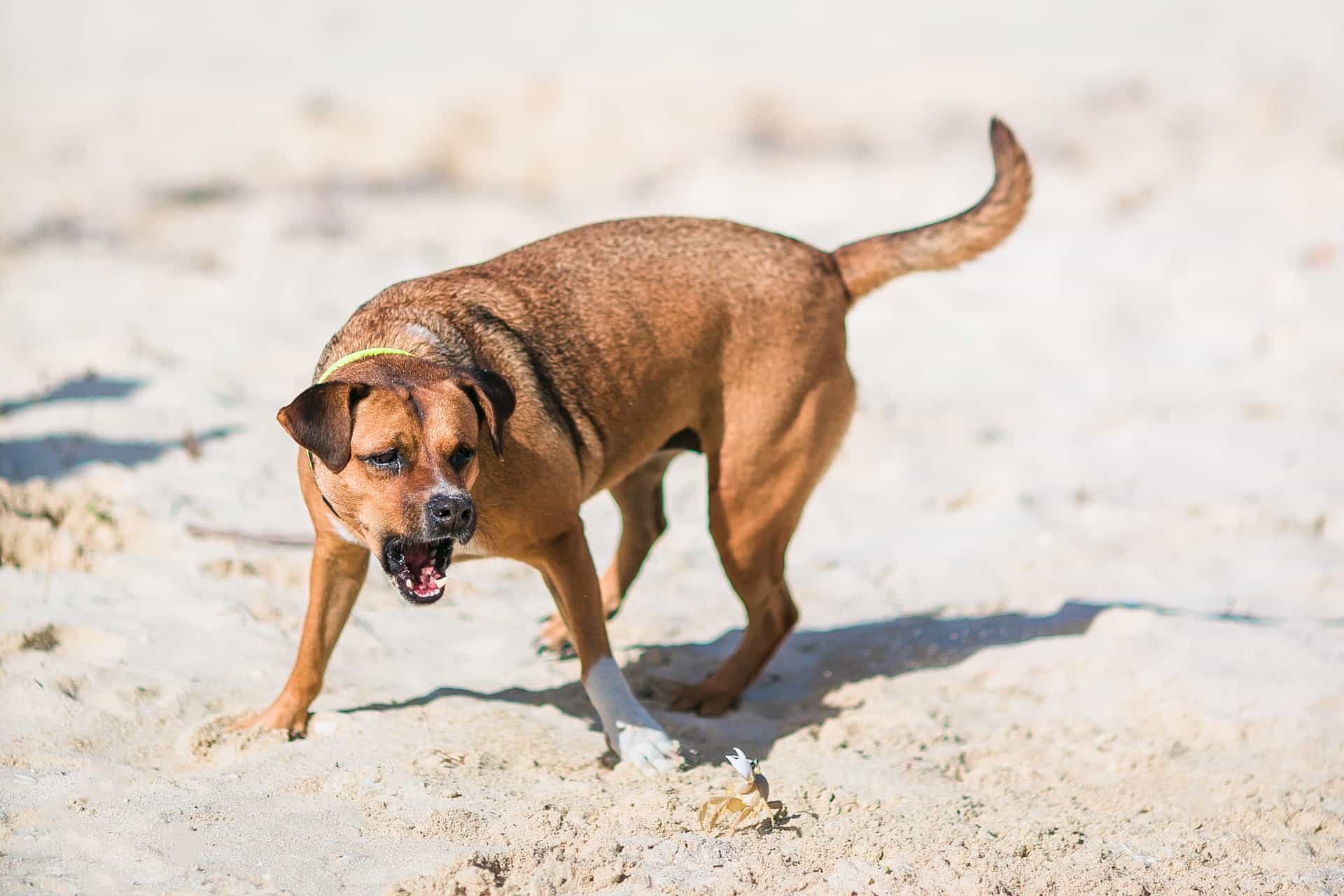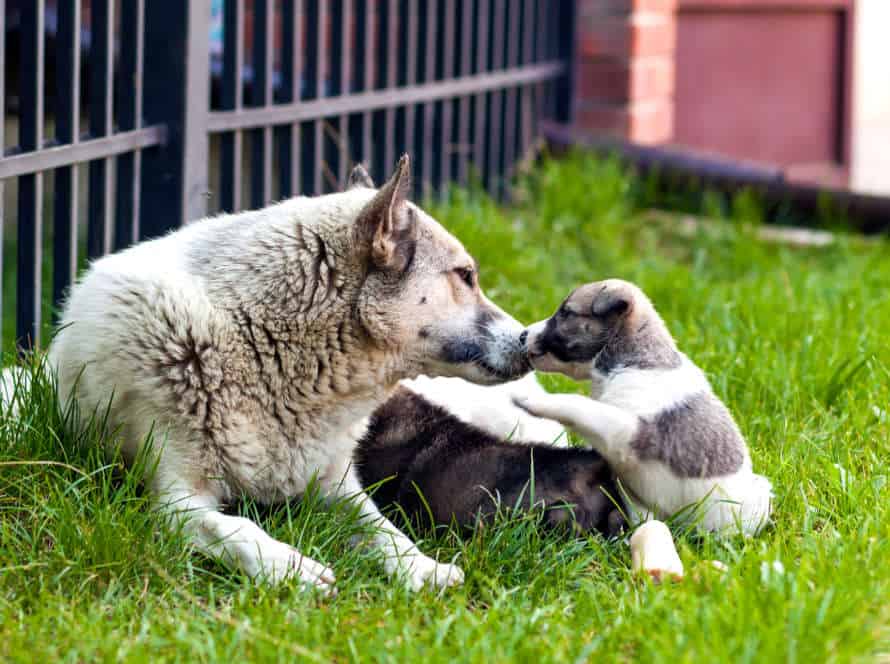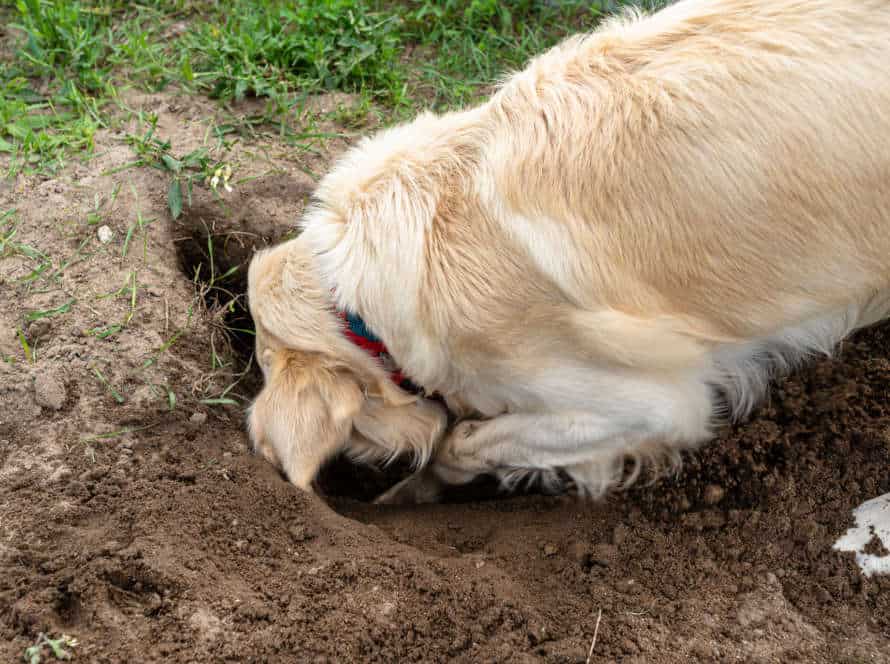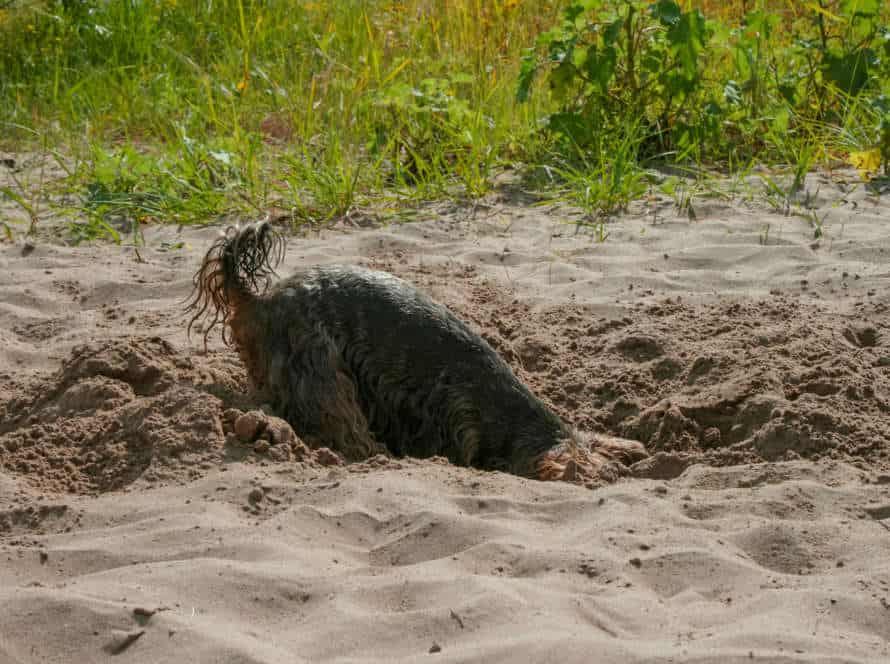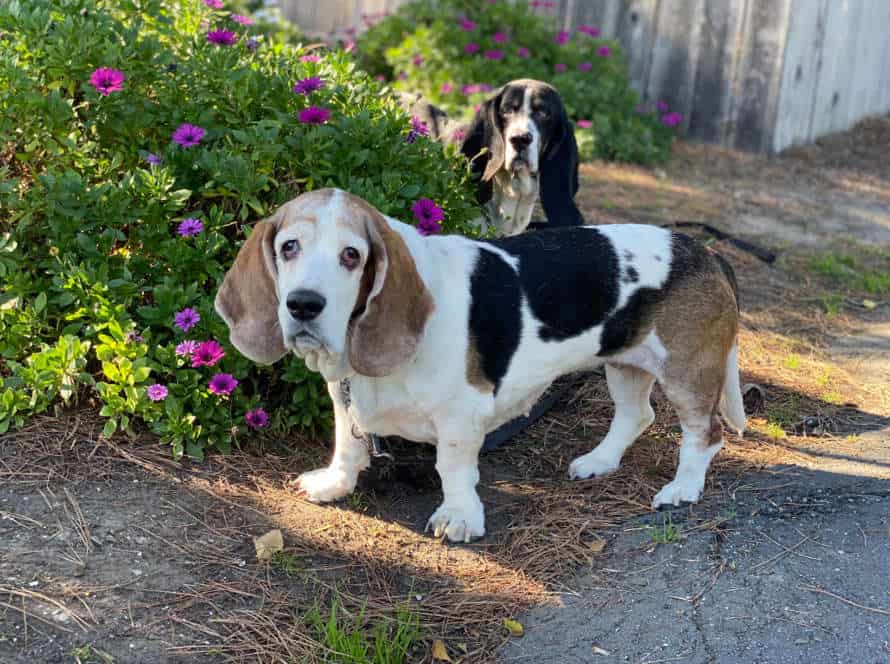Can Old Dogs Learn New Tricks? Re-training Aggressive Adults
Old pooches can still learn new stunts! Re-training aggressive adult doggos is totally doable. Here are some tips to help:
- Work out what’s causing their aggression – fear/anxiety, defending their territory, or lack of socialization. Then take steps to address it.
- Use positive reinforcement – treats and praise – when they behave well.
- Start with basic commands and work up.
- Train them to associate new, pleasant experiences with the triggers that used to make them aggressive.
- Everyone in the house needs to be on the same page – be consistent with training and expectations.
Re-training an aggressive adult pup takes patience, persistence, and sometimes even a pro. Good luck!
Understanding Aggression in Dogs
Retraining aggressive adult dogs can be overwhelming. Knowing the dog’s behavior and what’s causing its aggression is essential. We’ll discuss the basics of canine aggression and how to retrain adult dogs effectively. Identifying the cause of the behavior is key to creating a successful treatment plan.
Types of aggression
Aggression in dogs takes many forms. Identifying the type is essential for re-training an adult canine.
Territorial aggression is triggered when a pup feels its space is being invaded. Fear aggression is when dogs feel scared and threatened. Protective aggression is when a pup’s owners or prized resources are in danger. Dominance aggression occurs when a pup thinks its rank is higher than its owner’s. Redirected aggression happens when a pup is blocked from attacking the source of its aggression, and instead attacks something else.
To re-train an aggressive adult dog, you need time, patience, and help from a professional.
Causes of aggression
Aggression in dogs can have many causes. Fear, territorial instincts, illness, and lack of training or socialization might be some of them. To address the aggression, we must first understand its cause. Sometimes, behavior modification with a professional is needed. Old dogs can learn new tricks, but it takes patience and consistency. Importantly, consult a vet or pro trainer/behaviorist if your dog shows aggression.
Signs of aggression
Aggression in dogs can be misunderstood or overlooked, which can be risky. Here are some common signs of aggression to look out for:
- Growling and snarling
- Baring teeth
- Whites of eyes showing
- Lunging and nipping people/animals
- Stiff posture and raised hackles
Remember, aggression in dogs can be caused by many things; fear, territoriality or lack of socialization. With the correct training and behavior changes, even older dogs can learn new tricks and relearn appropriate behaviors. It’s suggested to contact a professional dog trainer to help with re-training aggressive adult dogs.
Assessing the Dog’s Aggression
Assessing an aggressive adult dog is essential when trying to re-train them. Discovering triggers, the root of the aggression and watching their body language is vital. Knowing the level of aggression is a big part of successfully re-training them.
Getting help from a professional
If your pup is acting aggressively, it can be tough to figure out what’s wrong without help from a pro. Get advice from a certified dog trainer or behaviorist to get the info and tools needed to evaluate and control the aggression.
Typically the examination starts with a conversation regarding the dog’s conduct past and a physical inspection. Then, the behaviorist may suggest some training tactics to manage the aggressive behavior. In certain cases, medication might be prescribed.
It’s possible for older dogs to learn new skills and unlearn aggressive behavior through retraining. It’s essential to work with a professional to do this safely and efficiently.
Don’t wait to ask for professional assistance if your dog is being aggressive–it can be solved with the proper guidance and approach.
Tip: Look for a Certified Professional Dog Trainer or Board-Certified Veterinary Behaviorist to make sure you get the best help for your dog’s aggression issues.
Identifying triggers
Discovering triggers is significant for assessing a dog’s ferocity and retraining grown-up aggressive dogs. What causes them to be aggressive? Loud noise, foreign people or objects, or other animals.
To spot triggers, carefully watch the dog’s behavior in different situations. Jot down the dog’s behavior in a diary, and note the conditions that caused their aggressive behavior.
Once the triggers are identified, then re-train the dog with positive reinforcement and desensitization techniques. Step-by-step, expose the dog to the triggers in a secure, monitored atmosphere. Reward them for being calm. Then, slowly increase their exposure to the trigger over time.
By distinguishing and retraining adult aggressive dogs, pet owners can stop future issues. It also creates a more secure and relaxed environment for both the dog and the people around them.
Determining the level of aggression
Identifying the level of aggression in dogs is essential. It helps to deal with behavioural problems and protect the pup and its environment.
Look for these signs:
- Growling, barking, biting – all these are clear aggressive signs.
- The pup’s body stiffens, fur stands up.
- Snarling and showing teeth when people or other animals come close.
- Aggression during mealtimes or when toys are around.
Once the level of aggression is established, consult an expert dog trainer. They can devise a suitable training routine, like socialization, desensitization or counterconditioning. Though it’s a common myth that old dogs can’t learn new tricks, it isn’t true. With patience, consistency, and expert guidance, aggression in adult dogs can be handled.
Re-Training Aggressive Dogs
It’s true, an old dog can’t learn new tricks. But, re-training an adult dog with aggressive tendencies? That’s possible! It takes dedication and effort from the owner, plus some patience, consistency, and understanding. Results depend on the severity of the aggression and the individual dog. But, if done right, it is possible to make a safe environment for everyone involved.
Seeking Professional Assistance
Re-training aggressive dogs can be tricky and risky. It’s best to get pro advice for the safety of both the pup and the trainer. Can old dogs learn new tricks? Yes, with the right training and dedication. Here are some tips to re-train an adult aggressive dog:
- Stay cool – Dogs can detect fear, worry, and irritation which can cause their aggression to heighten. Be patient, relaxed, and assured when training.
- Be consistent – Training a pup requires repetition and consistency. Same goes for re-training an aggressive dog. Set clear rules and stick to them.
- Get expert help – Re-training an aggressive dog can be dangerous. So it’s wise to get a professional animal behaviorist or trainer to help.
- Reward good behavior – Praise, give treats, and give toys to your pup to encourage positive behavior.
- Use positive reinforcement – Avoid using physical punishment, yelling, or aggressive training techniques. Try positive reinforcement like clicker training or reward-based training instead.
Re-training an aggressive dog takes time, patience, and consistency. Get an expert’s help and be prepared to put in effort and time to help your furry pal get over their aggression.
Positive Reinforcement Techniques for re-training adult dogs
Old pooches can learn fresh stunts! This includes re-training aggressive conduct with positive reinforcement strategies. It’s important to involve a trained pro for the safety and success of the re-training.
Owners can back the process by using positive reinforcement at home. Utilizing treats as a reward, clicker training, disregarding bad behavior and rewarding good behavior, and giving verbal praise and fondness can aid in re-training aggressive pups. Positive reinforcement makes a secure and agreeable training environment and aids in forming trust between the owner and the dog.
Staying consistent and patient are fundamental when re-training adult dogs. Owners should be ready for it to take time. With the right techniques and help from a trained professional, adult dogs can learn to modify behavior and live content, healthy lives as treasured members of their families.
Avoiding negative reinforcement techniques
Text: Negative reinforcement techniques are a no-no when it comes to re-training aggressive dogs. To help, here are some positive reinforcement techniques:
- Counter-conditioning: Teach the dog a new, positive response when faced with a situation that usually causes aggression. Give it a reward or treat for calm behavior.
- Desensitization: Expose the dog to the stimulus that causes aggression, starting at low intensity and increasing gradually.
- Clicker training: Use a clicker to mark positive behavior and then give a treat as a reward.
Remember that it takes time, patience, and consistency to re-train an aggressive dog. You might need the help of a professional dog trainer or behaviorist for the best results.
Maintaining Results
Training an adult pup can be hard. Results don’t last without consistent encouragement. Owners must observe the results of their training to keep the desired effect. Here are some techniques to help keep re-training aggressive adult dogs’ results:
Continued practice and consistency
For aggressive adult dogs, consistency is key to securing results and re-training them. You can teach old dogs new tricks, with patience, determination, and a consistent approach.
Dogs form habits. Thus, consistent effort is required to establish new, positive ones. Identifying the root cause of aggression is vital when re-training an adult dog. If they’re aggressive towards other dogs, controlled exposure can help them overcome this.
Positive reinforcement training should be practiced regularly to reinforce good behavior and curb negative behavior. Patience and time are needed for re-training an aggressive dog – but with consistency and perseverance, positive results can be seen.
Pro Tip: Seeking advice from a professional dog trainer or behaviorist is beneficial when re-training an aggressive adult dog.
Reinforcement of Positive behaviors
Positive reinforcement is an effective way to keep up good habits and train adult dogs with aggressive behavior. Here are some tips:
- Reward desirable behavior. Instead of scolding or hitting when your dog misbehaves, reward it with treats, praise, or playtime.
- Create a consistent routine. Make sure everyone follows it and keep it simple.
- Be patient. Learning new things can be hard for older dogs. Offer them support and don’t be too hard if they make mistakes.
- Lastly, if the behavior doesn’t improve, seek professional help. A trainer can give techniques to help your pup.
Positive reinforcement, consistency, and patience can help re-train aggressive adult dogs.
Avoiding negative situations that trigger aggression
Aggression in dogs can be serious. Re-training older dogs with aggressive tendencies can be tricky. The best way to do this is by avoiding negative triggers that could make their behavior worse. Here are some tips for managing and re-training aggression in older canines:
- Identify what causes your pup to get aggressive and keep away from those scenarios.
- Set up a daily routine for meals, physical activity, and socialization.
- Use positive reinforcement to reward good behavior and discourage bad behavior.
- Be consistent, patient, and don’t give up if progress isn’t instant.
Pro Tip: Consistency is essential when trying to re-train aggressive dogs. Evade negative situations and encourage positive behavior for a more successful re-training. With patience, determination, and love, older dogs can be taught new tricks and overcome aggression.
Conclusion
Tada! Old pooches can pick up new tricks. It’s achievable to re-train grown-up doggos with dedication, patience and persistence. With a cheerful attitude and the correct techniques, even the most troublesome dogs can be schooled to be tranquil, courteous and obedient. It’s significant to also accept that some outdated habits might not be forgotten and may take longer to mend. However, with patience and diligence, it is viable to re-train older dogs and adjust their behaviour in a positive manner.
The importance of patience and consistency
Patience and consistency are must-haves when retraining aggressive adult dogs. It takes time for them to unlearn bad habits and learn new ones. Consistency is critical for successful training. With regular and consistent techniques, you can achieve the desired results. Plus, it helps build trust between the dog and owner. Training aggressive dogs requires effort, patience, and time. However, with consistent methods, even old dogs can learn new tricks.
The benefits of positive reinforcement techniques
Positive reinforcement is a great way to train dogs and change their behavior. It’s different from punishing them for bad behavior. Instead, you reward them when they do something good.
Some of the benefits:
- Improved obedience and compliance.
- Better communication between owner and dog.
- A stronger bond and trust.
- More enthusiasm and eagerness to learn.
For re-training aggressive adult dogs, positive reinforcement works well. Focus on rewarding desirable behavior, like calmness and obedience. Ignore or redirect bad behavior. With patience and consistency, old dogs can learn new tricks.
The possibility of successful re-training for aggressive adult dogs
Re-training aggressive adult dogs can be successful, but it depends on several things. Such as, how bad the aggressive behavior is, and how long it has been happening. Also, the skill and experience of the dog trainer matters.
Though re-training older dogs can be harder than puppies or younger dogs, it’s doable. With patience, consistency, and proper techniques, aggressive adult dogs can learn to change their behavior, and obey orders from the owner.
But, not all aggressive behavior can be fully gone, especially if it is extreme or due to health issues. In those cases, managing the dog’s behavior, and keeping a safe environment, with tools like muzzles or medicine may be necessary.
To increase the chances of success, it is essential to work with a qualified, experienced dog trainer. They can create a plan that suits the dog’s individual needs and behavior issues.
Frequently Asked Questions
1. Can old dogs really learn new tricks?
Yes, they can. Dogs of any age can learn new things when given the right training, whether it’s a new behavior, trick or response.
2. Can aggressive dogs be re-trained?
Yes, with proper training and patience, aggressive dogs can learn to behave better and become less aggressive. Re-training an aggressive dog requires a lot of commitment and the right training approach.
3. Is it too late to train my older dog?
No, it’s never too late to teach an old dog new tricks. Dogs of any age can learn new things and benefit from training. The key is to be patient and consistent with your training methods.
4. What are some effective training techniques for older dogs?
Some effective training techniques for older dogs include positive reinforcement, clicker training, and operant conditioning. It’s important to find a training technique that works best for your dog’s learning style.
5. Can training help improve an older dog’s temperament?
Yes, training can help improve an older dog’s temperament. Through training, dogs can learn how to better control their impulses and respond to different situations. This can help them become calmer and more well-behaved.
6. How long does it take to re-train an aggressive dog?
The duration of re-training an aggressive dog can vary depending on the severity of the aggression and the dog’s temperament. It may take several weeks or even months of consistent training and patience to see significant improvement in behavior.

